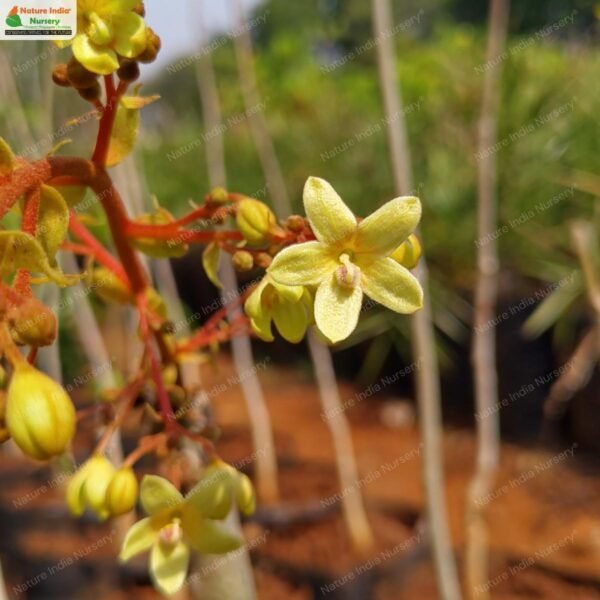Sterculia villosa, commonly known as the Hairy Sterculia or Elephant Rope Tree, is a medium-sized, deciduous tree that can grow up to 10 meters tall. It has a straight trunk and a spreading crown, with large, palmately lobed leaves featuring 5-7 lobes. The leaves are glabrescent on the top but tomentose (hairy) on the bottom. The flowers are small, greenish-yellow, and appear in rusty-colored, pendulous panicles, while the fruit is a woody capsule containing numerous oblong, smooth, black seeds. Native to the Indian subcontinent, including India and Bangladesh, and extending to Myanmar, Thailand, Cambodia, Laos, and southern China, the tree thrives in mixed forests.
The Hairy Sterculia’s ecological significance extends beyond its physical characteristics, as it provides a valuable food source for various wildlife species, including birds and small mammals. Its flowers attract bees and other pollinators, contributing to its success in its native habitats.
Habitat
Sterculia villosa is native to the Indian subcontinent, including India and Bangladesh, and extends to Myanmar, Thailand, Cambodia, Laos, and southern China, thriving in mixed forests.
Planting and Care
-
Propagation: Through seeds or cuttings.
-
Soil Preference: Prefers well-drained, light soils. Can tolerate poor, rocky soils.
-
Sunlight and Water: Thrives in full sun. Requires moderate watering, especially during dry periods.
-
Drought Resistance: Established plants are very drought-tolerant.
Additional Information
-
Economical Values: The tree is a potential source of wood fiber for pulp and paper making.
-
Edible Uses: The powdered root is mixed with rice flour to prepare a bread-like doughnut. Seeds can be roasted or baked.
-
Medicinal Uses: Used as a diuretic, cooling, and aphrodisiac herb in traditional medicine.
-
Other Uses: Gum obtained from the bark is used as a substitute for gum tragacanth in confectionery.
-
Wildlife Significance: Attracts pollinators like bees and other pollinators. The seeds provide food for various birds and small mammals.







